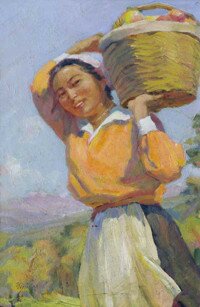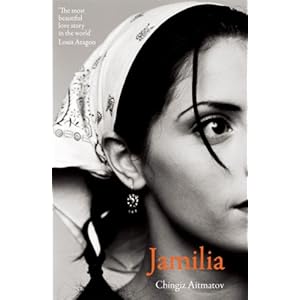Kyrgyzstan is known for its arts and crafts. More
specifically, they excel at the art of felt work, embroidery, and weaving. Many
of the nomadic people still live in traditional houses called yurts: these are like
large round tent-like homes that can be packed up and moved. Yurts are often
decorated with a number of rugs and woven mats on the inside. They often make
carpets out of felt with ornamentations called a “skyrdak.” It’s generally made
out of wool, painted with bright colors, and is usually about 4m x 2m (13.1 ft
x 6.6 ft). A variation of this is the “ala kiyiz,” which is not sewed together
but rather rolled together.
Before they lay the carpets on the ground, they
place woven mats under them first. These woven mats are called “chiy” and are
made with straw and colored threads of wool. They are designed to keep the
moisture off of the carpets.
Embroidery is also important to the Kyrgyz culture
and is chiefly a women’s occupation. It’s namely used on wall hangings, bags,
and clothing. Leatherwork is also valued for use in horse equipment, shoes,
clothing, and other pieces of equipment. Woodworking is also essential and is often
utilized in furniture, cooking utensils and other tools, game boards, and
musical instruments. Silver, especially in the form of jewelry, is deemed
sacred and is thought to keep evil spirits away. I’ve always liked silver jewelry
better than gold since I was a teenager, so I think I’d fit right in.
As far as painting goes, it wasn’t something their
culture did for a long time. You have to remember for many centuries, much of
their culture was nomadic, so painting wasn’t exactly conducive to that
lifestyle. But as cities began to take hold and especially when country fell
underneath Russian rule, the arts were highly subsidized and encouraged. Art
schools were established. Once they gained their independence after Russia
broke apart, their economy collapsed, and the arts were the first to suffer.
However, some art galleries have reopened and artists are painting and creating
again. Although many styles of art are taught in the art schools, many Kyrgyz artists
latch onto realism and portrait painting (which is odd considering Kyrgyzstan
is primarily a Muslim country, and painting human forms is traditionally
prohibited in Islam. This is probably allowed due to their lack of devoutness.).
 |
| by Semen Chuikov |
By far, the most well-known literary work is the
Manas epic. It’s one of the world’s longest epic poems, coming in at around a
half million lines. (In comparison, it’s roughly 20 times longer than Homer’s Odyssey.) This poem tells the historical
accounts of Manas and his efforts to unite all of the tribes in the Kyrgyz lands
to fight against the Chinese and Uyghurs and others.
| Statue of Manas |
Today, most Kyrgyz writers write in either Russian
or Kyrgyz, and author Chyngyz Aitmatov writes in both. Aitmatov is often
considered one of Kyrgyzstan’s most well-known authors. His first novel was
published in 1956 and has published many novels with his latest novel being
published in 2006. His most famous works include Jamilia, The White Steamboat, The
Girl With the Red Scarf, and The DayLasts More Than a Hundred Years. Many of these also have English language
translations. He won the Lenin Prize in 1963 for Tales of Mountains and Steppes, a compilation of several stories.
Other Kyrgyz writers include Kasïmalï Bayalinov whose
story “Ajar” was the first short story published 1927 and Tügölbay Sïdïkbekov
whose novel Keng-Suu was the first
novel published in 1937. Folklore has influenced poetry through the efforts of Joomart
Bökönbaev, Jusup Turusbekov, Kubanïchbek Malikov, and Aalï Tokombaev. The first
newspaper, Erkin Too, was created in
1924, and thus, the Kyrgyz press was born.
There have also been a handful of books written
about Kyrgyzstan, mostly by Americans and several of them Peace Corps members. Other
Americans who found themselves in the country have written about their
experiences as well.
Up next: music and dance





I’m surely coming again to read these articles and blogs kyrgyzstan
ReplyDelete